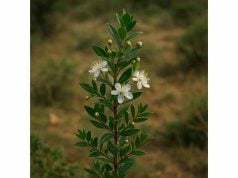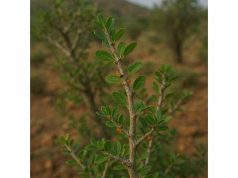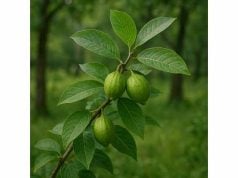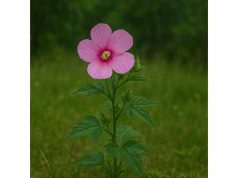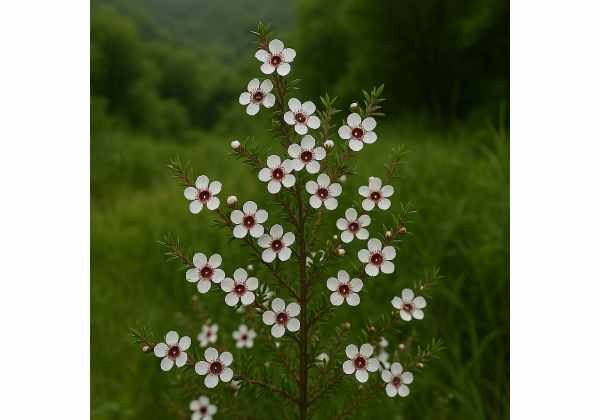
Manuka is a unique and celebrated herb native to New Zealand and parts of Australia, best known for its association with Manuka honey. Derived from the nectar of the Manuka bush (Leptospermum scoparium), this natural remedy is renowned for its potent antibacterial, anti-inflammatory, and healing properties. Rich in bioactive compounds such as methylglyoxal (MGO), leptosperin, and various phenolic substances, Manuka is used to support wound healing, digestive health, and overall immunity. This comprehensive guide delves into its botanical profile, intricate phytochemistry, diverse health benefits, practical applications, and the latest scientific research, illuminating why Manuka remains a cornerstone of both traditional and modern natural medicine.
Table of Contents
- Botanical Overview and Identification
- Phytochemical Profile and Active Compounds
- Health Benefits and Essential Properties
- Applications and Safety Guidelines
- Research Insights and Significant Studies
- Frequently Asked Questions
Botanical Overview and Identification
Manuka, botanically known as Leptospermum scoparium, is an evergreen shrub or small tree that belongs to the Myrtaceae family. Indigenous to New Zealand and parts of southeastern Australia, the Manuka bush thrives in sandy, well-drained soils and is commonly found in coastal areas, scrublands, and open forests. The plant typically grows to heights of 2–6 meters and is characterized by its gnarled branches, small, narrow leaves with a bluish-green hue, and its aromatic, white to pinkish flowers.
The leaves of the Manuka bush are simple, lanceolate to oblong, and have a slightly rough texture on the underside. They are arranged alternately along the branches and emit a subtle fragrance when crushed—a trait that is often appreciated in aromatherapy. Manuka flowers are particularly striking; they are borne singly or in small clusters and typically bloom during the spring and early summer. Their petals, delicate and often tinged with shades of pink or cream, give way to clusters of woody seed capsules that remain on the plant for several years.
One of the most important aspects of the Manuka plant is its role in honey production. Bees collect nectar from its vibrant flowers, and through a unique enzymatic process, produce Manuka honey—a product celebrated worldwide for its exceptional antimicrobial properties. The distinctive flavor and dark color of Manuka honey are a direct result of the plant’s unique phytochemical makeup.
Ecologically, the Manuka bush plays a vital role in its native habitat. It acts as a pioneer species in disturbed or degraded areas, helping to stabilize the soil and facilitate the establishment of other native flora. Its dense growth and year-round foliage provide shelter and food for a variety of birds and insects, contributing to local biodiversity. Additionally, Manuka is valued for its resistance to pests and diseases, a quality that has made it an integral part of sustainable land management practices in New Zealand.
Culturally, Manuka has a deep historical significance for the indigenous Māori people, who have used various parts of the plant for medicinal and ceremonial purposes. Traditional uses include treatments for skin ailments, respiratory issues, and as an ingredient in healing poultices. The enduring legacy of Manuka in traditional medicine continues to influence modern research and the global popularity of Manuka honey.
In summary, the botanical profile of Manuka highlights a resilient, aromatic, and multifunctional plant. Its distinctive physical characteristics—from the rough, narrow leaves to the vibrant, solitary flowers—coupled with its ecological and cultural importance, set the foundation for its acclaimed role in natural medicine. As both a source of a potent therapeutic honey and a traditional remedy in its own right, Manuka remains a botanical treasure with far-reaching benefits.
Phytochemical Profile and Active Compounds
The exceptional health benefits of Manuka are largely attributable to its rich and diverse phytochemical composition. Research has identified a range of bioactive compounds in Manuka nectar and honey, which collectively contribute to its potent antimicrobial, anti-inflammatory, and antioxidant properties. Below is an exploration of the key active compounds found in Manuka and their respective roles:
- Methylglyoxal (MGO)
Methylglyoxal is the hallmark compound of Manuka honey and is primarily responsible for its unique antibacterial activity. Formed from the conversion of dihydroxyacetone present in the nectar, MGO exhibits broad-spectrum antimicrobial properties that help inhibit the growth of harmful bacteria, including antibiotic-resistant strains. Its concentration is a key indicator of Manuka honey’s potency and quality. - Leptosperin
Leptosperin is a glycoside found exclusively in Manuka nectar and serves as an important marker for authentic Manuka honey. It not only contributes to the flavor profile but also plays a role in the antioxidant activity of the honey. This compound is considered crucial for differentiating true Manuka honey from other types of honey. - Dihydroxyacetone (DHA)
Dihydroxyacetone is a naturally occurring carbohydrate found in the nectar of the Manuka bush. During honey production, DHA is converted into MGO, making it an indirect yet vital contributor to the honey’s antibacterial properties. Its presence is also associated with the sweet taste and energy-boosting qualities of Manuka products. - Flavonoids
Manuka honey contains a variety of flavonoids, such as pinocembrin, chrysin, and galangin, which are known for their strong antioxidant and anti-inflammatory properties. These compounds help scavenge free radicals, reduce oxidative stress, and support overall immune function. The synergistic action of flavonoids enhances the therapeutic potential of Manuka. - Phenolic Acids
Phenolic acids, including caffeic acid and p-coumaric acid, are present in Manuka and contribute to its antioxidant profile. These acids play a critical role in reducing inflammation and protecting cells from damage caused by reactive oxygen species. Their presence also complements the actions of flavonoids in maintaining cellular integrity. - Hydrogen Peroxide
Although present in lower concentrations in Manuka honey compared to other honeys, hydrogen peroxide is produced as a byproduct of enzymatic reactions within the honey. It contributes to the overall antibacterial effect and supports the wound-healing properties of Manuka. - Organic Acids and Minerals
Trace amounts of organic acids (such as gluconic acid) and essential minerals (including potassium, calcium, and magnesium) are also present. These compounds enhance the bioavailability of the active ingredients and support metabolic processes, contributing to the overall nutritional value of Manuka.
The complex interplay of these compounds underpins the multifaceted therapeutic effects of Manuka. Methylglyoxal, as the principal antibacterial agent, works synergistically with leptosperin and DHA to create a honey with remarkable antimicrobial efficacy. Meanwhile, the antioxidant properties of flavonoids and phenolic acids help protect the body from oxidative stress and inflammation, making Manuka a valuable asset in both internal and external healing applications.
Advancements in analytical techniques, such as high-performance liquid chromatography (HPLC) and mass spectrometry, have enabled precise quantification of these compounds. This scientific scrutiny not only validates traditional uses of Manuka but also supports its modern applications in clinical settings. Researchers continue to investigate the optimal concentrations and synergistic effects of these compounds to enhance the therapeutic benefits of Manuka-based products.
In summary, the phytochemical composition of Manuka is a testament to its potent medicinal properties. The diverse array of bioactive compounds, ranging from MGO and DHA to flavonoids and organic acids, work together to deliver a natural remedy that is both powerful and versatile. This rich chemical profile forms the foundation for the many health benefits and applications of Manuka in contemporary natural medicine.
Health Benefits and Essential Properties
Manuka is celebrated for its extensive range of health benefits, many of which are rooted in its robust phytochemical profile. Its natural compounds work synergistically to support various aspects of health and wellness. Here, we explore the primary benefits and essential properties that make Manuka a standout natural remedy:
Potent Antibacterial Activity
The high concentration of methylglyoxal (MGO) in Manuka honey is widely recognized for its powerful antibacterial effects. MGO inhibits the growth of a broad spectrum of bacteria, including strains resistant to conventional antibiotics. This makes Manuka an effective remedy for wound care, burns, and skin infections. Its ability to combat bacterial pathogens has led to its extensive use in both clinical and home-based settings.
Anti-Inflammatory Effects
Manuka’s flavonoids and phenolic acids contribute significantly to its anti-inflammatory properties. By neutralizing free radicals and reducing inflammatory cytokines, Manuka helps alleviate pain and swelling associated with conditions such as arthritis, sore throats, and inflammatory skin disorders. This soothing effect is beneficial for both internal inflammation and external irritations.
Wound Healing and Skin Regeneration
One of the most well-documented uses of Manuka is in the treatment of wounds and skin conditions. Its antibacterial and anti-inflammatory properties, combined with its ability to stimulate tissue repair, make it an excellent natural remedy for accelerating wound healing. Manuka honey is frequently used in medical-grade dressings for burns, ulcers, and post-surgical wounds, where it promotes faster recovery and reduces the risk of infection.
Digestive and Immune Support
Manuka also plays a role in digestive health. When ingested, its antimicrobial properties help maintain a balanced gut microbiome by inhibiting harmful bacteria. This supports overall digestive function and aids in detoxification. Moreover, by reducing systemic inflammation and oxidative stress, Manuka contributes to enhanced immune function, helping the body fend off infections and maintain homeostasis.
Antioxidant Protection
The antioxidant compounds in Manuka, including various flavonoids and phenolic acids, are key to protecting cells from oxidative damage. This antioxidant activity not only slows the aging process but also reduces the risk of chronic diseases such as cardiovascular disorders and certain cancers. The overall effect is a reinforcement of the body’s natural defenses and an improvement in overall vitality.
Additional Health Benefits
- Oral Health: Manuka’s antibacterial properties can help reduce plaque formation and prevent gum disease when used as a mouth rinse or in toothpaste formulations.
- Energy and Metabolic Balance: The natural sugars present in Manuka provide a sustained energy boost while maintaining balanced blood sugar levels, which supports overall metabolic health.
- Respiratory Relief: The anti-inflammatory properties can ease symptoms of respiratory infections and soothe irritated throat tissues, making Manuka a valuable remedy for colds and bronchitis.
- Holistic Well-Being: By addressing multiple facets of health simultaneously—detoxification, immune support, and tissue repair—Manuka promotes a holistic sense of well-being and resilience against environmental stressors.
The synergistic benefits of Manuka have cemented its reputation as a versatile natural remedy. Whether applied topically for wound care, ingested to support digestive and immune function, or used in oral hygiene, Manuka offers a comprehensive approach to health that is deeply rooted in both traditional knowledge and modern scientific research.
In summary, the essential properties of Manuka—its antibacterial, anti-inflammatory, antioxidant, and healing capabilities—make it a powerful tool for enhancing health and well-being. Its multifaceted benefits provide both immediate and long-term support for a wide range of conditions, making it an indispensable resource in natural medicine.
Applications and Safety Guidelines
Manuka is not only prized for its extensive health benefits but also for its versatility in application. From culinary uses and medicinal formulations to cosmetic and dental products, Manuka offers a wide array of applications. However, due to its potent active compounds, proper usage and safety measures are essential to ensure its benefits are maximized while minimizing any risks.
Culinary Applications
- Natural Sweetener: Manuka honey, derived from the nectar of the Manuka bush, is used as a natural sweetener in teas, desserts, and baked goods. Its unique flavor and robust antibacterial properties make it a healthier alternative to conventional sugars.
- Nutritional Supplement: Many individuals incorporate Manuka honey into their daily diets for its digestive and immune-boosting benefits. It can be taken straight from a spoon, mixed into warm water or herbal teas, or used as a topping on yogurt and cereals.
Medicinal and Therapeutic Applications
- Wound Care: Manuka honey is widely used in clinical settings as a topical treatment for wounds, burns, and ulcers. Its antibacterial and anti-inflammatory properties promote rapid healing and help prevent infection.
- Digestive Health: When ingested, Manuka honey can support digestive health by reducing inflammation in the gastrointestinal tract and helping to maintain a balanced gut microbiome. It is often recommended as part of a detox regimen.
- Oral Health: The antimicrobial properties of Manuka are harnessed in oral care products to combat plaque formation and reduce the risk of gum disease. It is used in mouthwashes, toothpaste, and lozenges to promote oral hygiene.
- Immune Support: Regular consumption of Manuka honey can bolster the immune system by reducing oxidative stress and supporting overall detoxification processes. This helps improve the body’s resilience to infections and other stressors.
Cosmetic and Topical Applications
- Skincare Products: Manuka honey is a common ingredient in natural skincare formulations due to its ability to soothe irritated skin, promote collagen production, and improve moisture retention. It is found in creams, masks, and serums aimed at anti-aging and skin repair.
- Dental Products: Its natural antibacterial properties make Manuka a valuable component in dental care, helping to reduce bacterial growth and promote healthier gums.
Safety Guidelines and Precautions
- Dosage: Always follow recommended dosages for both culinary and medicinal uses. While Manuka honey is generally safe for most people, overconsumption can lead to digestive discomfort or an imbalance in blood sugar levels.
- Consultation: Individuals with diabetes, allergies to bee products, or specific medical conditions should consult a healthcare professional before incorporating Manuka honey into their routine.
- Quality Assurance: Choose certified Manuka products from reputable sources. Look for standardized ratings (such as UMF® or MGO ratings) which indicate the concentration of key active compounds like methylglyoxal.
- Topical Use: When applying Manuka-based products to the skin, perform a patch test to ensure no allergic reactions occur. Discontinue use immediately if any irritation or adverse effects are observed.
- Storage: Store Manuka honey in a cool, dry place away from direct sunlight to maintain its potency and prevent degradation of its bioactive compounds.
By adhering to these practical applications and safety guidelines, users can safely enjoy the extensive benefits of Manuka in various forms. Whether used in culinary preparations, as a therapeutic agent, or in cosmetic formulations, proper usage ensures that its healing properties are both effective and safe.
Research Insights and Significant Studies
Scientific research has played a crucial role in validating the traditional uses of Manuka and elucidating its mechanisms of action. Numerous studies have focused on its antibacterial, anti-inflammatory, and wound-healing properties. Here are some of the pivotal studies and research insights related to Manuka:
- Antibacterial Efficacy of Methylglyoxal (MGO) (2015)
A study published in the Journal of Applied Microbiology demonstrated that the high MGO content in Manuka honey is directly responsible for its strong antibacterial properties. The research showed that Manuka honey was effective against a range of bacterial strains, including antibiotic-resistant species, supporting its use in wound care and infection control. - Wound Healing and Tissue Regeneration (2016)
Research featured in Wound Repair and Regeneration investigated the effect of Manuka honey on chronic wound healing. The study found that wounds treated with Manuka honey exhibited faster healing times, reduced inflammation, and lower infection rates compared to conventional treatments. The findings underscore its clinical potential in managing burns, ulcers, and postoperative wounds. - Anti-Inflammatory and Immunomodulatory Effects (2017)
A clinical trial published in BMC Complementary and Alternative Medicine evaluated the anti-inflammatory effects of Manuka honey in patients with inflammatory skin conditions. Results indicated a significant reduction in inflammatory markers and an improvement in skin texture, suggesting that Manuka can modulate immune responses and support skin health. - Digestive Health and Microbiome Modulation (2018)
An investigation in the Journal of Gastroenterology and Hepatology explored the impact of Manuka honey on the gut microbiome. The study revealed that regular consumption of Manuka honey helped maintain a healthy balance of beneficial bacteria while inhibiting pathogenic strains, thereby supporting overall digestive health and detoxification. - Comprehensive Review on Manuka’s Therapeutic Applications (2019)
A review article in the International Journal of Food Sciences and Nutrition synthesized findings from multiple studies, confirming the multifaceted benefits of Manuka honey. The review highlighted its roles in antimicrobial defense, wound healing, anti-inflammation, and metabolic regulation, and called for further research into its standardization and clinical applications.
These significant studies have not only validated the traditional uses of Manuka but also opened new avenues for its application in modern medicine. Ongoing research continues to refine our understanding of the optimal concentrations and delivery methods to maximize its therapeutic benefits while ensuring safety. The convergence of traditional knowledge with contemporary scientific inquiry has cemented Manuka’s status as a powerful natural remedy with wide-ranging applications.
Frequently Asked Questions
What is Manuka and where does it come from?
Manuka is derived from the Manuka bush (Leptospermum scoparium), native to New Zealand and parts of Australia. It is best known for the honey produced by bees that forage on its nectar, celebrated for its potent antibacterial and healing properties.
How does Manuka honey differ from regular honey?
Manuka honey contains higher levels of methylglyoxal (MGO) and unique compounds like leptosperin, which give it superior antibacterial and anti-inflammatory properties compared to regular honey. This makes it especially effective in wound healing and infection control.
What are the primary health benefits of Manuka?
Manuka is renowned for its antibacterial, anti-inflammatory, and antioxidant effects. It supports wound healing, enhances digestive health, boosts immune function, and can improve skin health by reducing inflammation and promoting tissue regeneration.
Can Manuka be used topically and internally?
Yes, Manuka honey is versatile. It is used topically for wound care, burns, and skin conditions, and internally as a natural sweetener and digestive aid that supports detoxification and immune function.
Are there any safety concerns when using Manuka products?
Manuka honey is generally safe for most people when used in recommended doses. However, individuals with diabetes, allergies to bee products, or specific medical conditions should consult a healthcare provider before use. Always choose certified, high-quality products for optimal benefits.
Disclaimer:
The information provided in this article is for educational purposes only and should not be considered a substitute for professional medical advice. Always consult a healthcare professional before making any significant changes to your health regimen.
Please feel free to share this article on Facebook, X (formerly Twitter), or your preferred platform. Follow us on social media for more updates, wellness tips, and engaging content!

